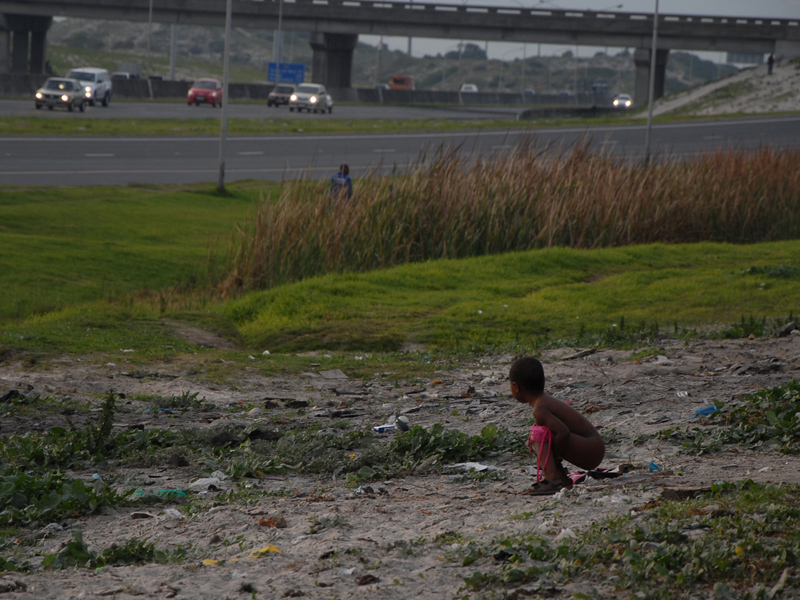Water Wars
Welcome back!
My first blog addresses how the politics of water can be materialised into 'water wars' through an analysis of the Lake Chad basin case study.
To start, meet Gadaf Mahamat. He describes how his property was torched in a recent clash between local Arab herders and Mousgoum farmers. In turn, he lost everything. The cause? water scarcity in Northern Cameroon. Tensions arose over disagreements regarding use of a local reservoir. Similar conflicts result in millions of victims associated with the shrinking of the Lake Chad basin.
Figure 1: A soldier stood by Lake Chad (Photo: Arno Trumper/ adelphi)
Lake Chad is situated between Chad, Nigeria, Niger, and Cameroon (figure 2). Chronic droughts in the mid 20th century have caused the lake to shrink by 90% (Mohanty et al., 2021). Furthermore, climate change threatens to increase rainfall variability, worsening water and food insecurity. Lake Chad's depletion has therefore resulted in 2.3 million people being forced to migrate, with an additional 5 million people struggling with food insecurity (Usigbe, 2019).
Figure2: Map of Lake Chad (Nzouankeu 2021)
The Lake Chad basin countries are ranked within the 10 least peaceful countries in Africa (GTI, 2020). However, increased water scarcity and mass migration exacerbate tensions. Increased social unrest and the loss of economic livelihoods has allowed the terrorist group 'Boko Haram' to grow and ascertain regional control (Owonikoko, 2020). Additionally, as with Gadaf Mahamat, water depletion has led to increased tensions between farmers and pastoralists killing 4000 people in Nigeria between 2016-2019 (Mohanty et al., 2021).
As 80-90% of Lake Chad's economic occupations are underpinned by water, increased water scarcity and competition for water deem conflict inevitable. 'Conflict of ownership' is mainly characterized by an inter-state upstream vs downstream dispute over rights to water resources (Onuoha, 2008). Additionally, they are often materialized through fishing rights. For example, allegations of dehumanizing treatment of Nigerian Fisherman by Cameroonian and Chadian officers resulted in outright conflict in 1983, where 9 Nigerians and 75 Chadians were killed. Similarly, a Nigerian fisherman, Sanusi, describes the seizing of his fishing equipment and being forced to pay extortionate fees for their return (Murray, 2007).
In contrast, 'conflict of use' is seen on a more micro, intra-state scale. It involves disputes of how water use of one group can disrupt the water use of another. For example, the contraction of Lake Chad forces farmers to operate closer to the Lake's shoreline. However, this land is predominantly used for pastoral grazing leading to increased frequency of disputes (Onuoha, 2007).
Clearly, water plays an central role in conflicts, however, is it the most important factor?
Galli and Rulli (2022) conducted an analysis to map the relationship between conflicts and regions of high/ low water availability.
Figure3: Map of conflicts and water availability (Galli and Rulli (2022))
The results speak for themselves. Figure 3 illustrates how regions with the highest concentration of conflicts coincide with areas of lowest water availability. However, interestingly, conflicts also occur in areas of the highest water availability.
But how can water wars be addressed? Solutions require a holistic approach. Longer term solutions need to address climate change which threatens to worsen existing water depletion (Vivekananda, 2018). Alternative policies have attempted to recharge the lake with water. In 2018, a project aimed to steer water from the Ubangi River in the DRC (Omotesho, 2022). However, given the 2400km seperating the Ubangi River and Lake Chad, economic restraints and trans-national tensions prove limiting. More sustainable solutions should therefore entail improving resilience to increasing water variability. For example, the introduction of climate-smart crops such as tubers.
I hope you enjoyed this post, stay tuned for more!





Very interesting case study! The differentiation between conflicts of use and ownership brings into the light the fact that conflict over water can take multiple forms.
ReplyDelete